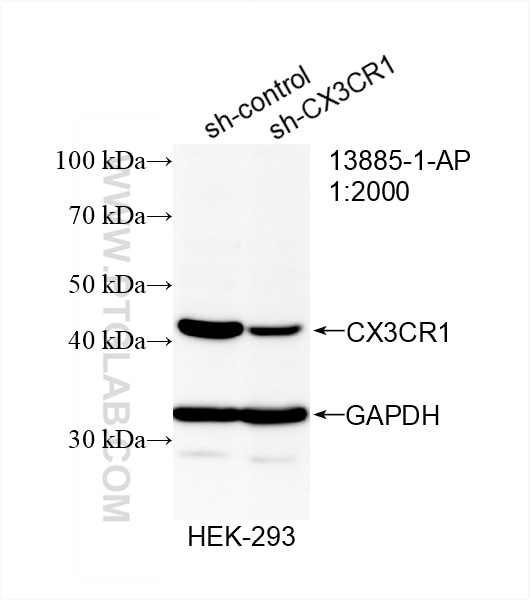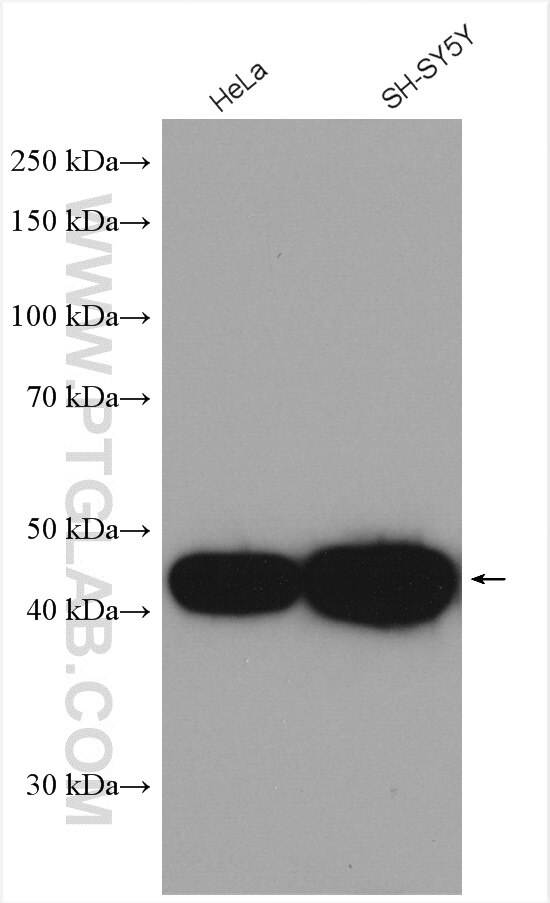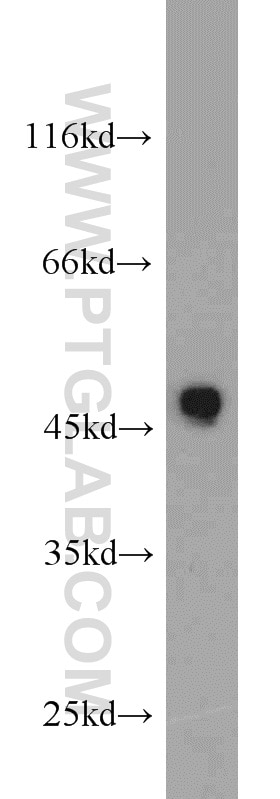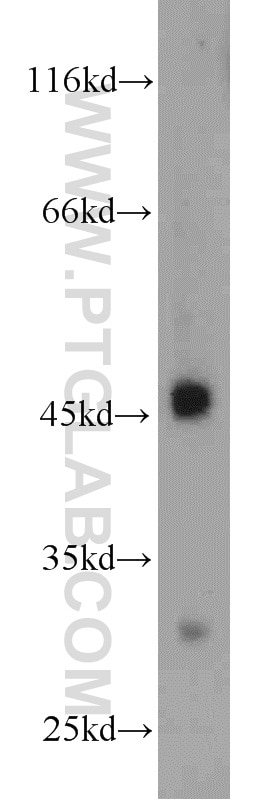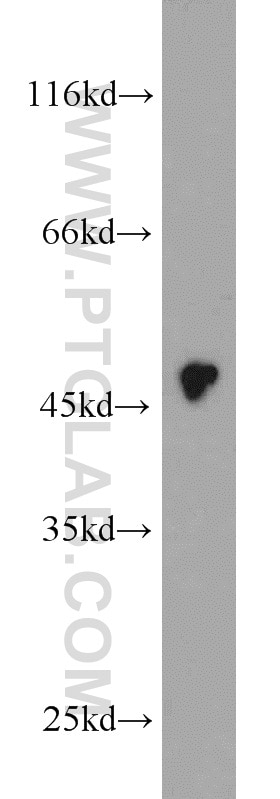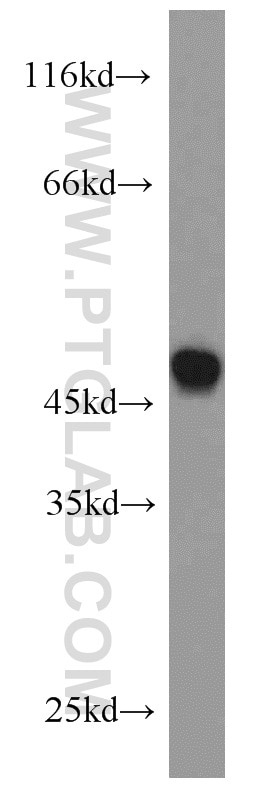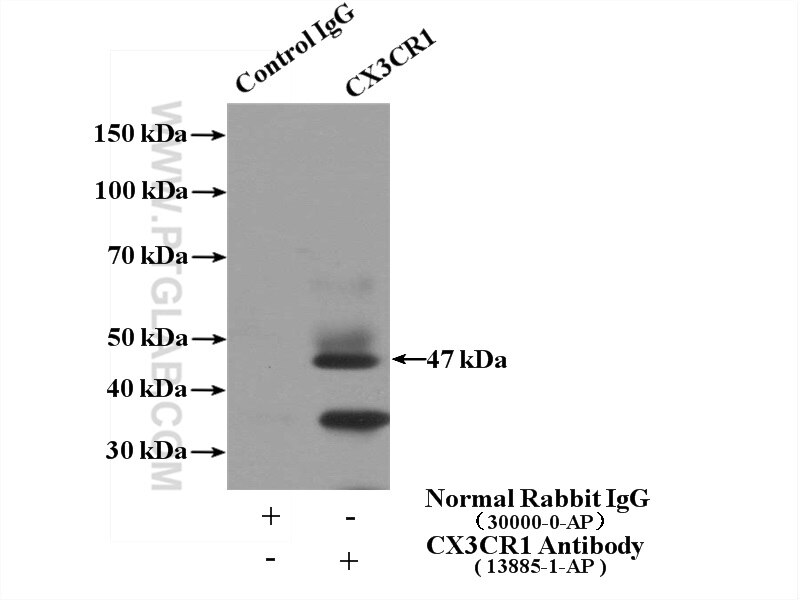Tested Applications
| Positive WB detected in | HeLa cells, HL-60 cells, HEK-293 cells, SH-SY5Y cells, U-937 cells, K-562 cells |
| Positive IP detected in | SH-SY5Y cells |
Recommended dilution
| Application | Dilution |
|---|---|
| Western Blot (WB) | WB : 1:1000-1:4000 |
| Immunoprecipitation (IP) | IP : 0.5-4.0 ug for 1.0-3.0 mg of total protein lysate |
| It is recommended that this reagent should be titrated in each testing system to obtain optimal results. | |
| Sample-dependent, Check data in validation data gallery. | |
Product Information
13885-1-AP targets CX3CR1 in WB, IHC, IF, IP, CoIP, ELISA, Cell treatment applications and shows reactivity with human samples.
| Tested Reactivity | human |
| Cited Reactivity | human, mouse, rat, zebrafish |
| Host / Isotype | Rabbit / IgG |
| Class | Polyclonal |
| Type | Antibody |
| Immunogen |
CatNo: Ag4149 Product name: Recombinant human CX3CR1 protein Source: e coli.-derived, PGEX-4T Tag: GST Domain: 254-355 aa of BC028078 Sequence: ETLKLYDFFPSCDMRKDLRLALSVTETVAFSHCCLNPLIYAFAGEKFRRYLYHLYGKCLAVLCGRSVHVDFSSSESQRSRHGSVLSSNFTYHTSDGDALLLL Predict reactive species |
| Full Name | chemokine (C-X3-C motif) receptor 1 |
| Calculated Molecular Weight | 40 kDa |
| Observed Molecular Weight | 44-47 kDa |
| GenBank Accession Number | BC028078 |
| Gene Symbol | CX3CR1 |
| Gene ID (NCBI) | 1524 |
| RRID | AB_2087418 |
| Conjugate | Unconjugated |
| Form | Liquid |
| Purification Method | Antigen affinity purification |
| UNIPROT ID | P49238 |
| Storage Buffer | PBS with 0.02% sodium azide and 50% glycerol, pH 7.3. |
| Storage Conditions | Store at -20°C. Stable for one year after shipment. Aliquoting is unnecessary for -20oC storage. 20ul sizes contain 0.1% BSA. |
Background Information
CX3CR1, also known as GPR13, V28 and fractalkine receptor, belongs to the 7-transmembrane G protein-coupled receptor (GPCR) family. It is expressed on microglia, astrocytes, NK cells, monocytes/macrophages, and a subpopulation of T cells. CX3CR1 is the receptor for fractalkine (CX3CL1) and mediates both its adhesive and migratory functions. It also acts as coreceptor with CD4 for HIV-1 virus envelope protein (in vitro), and some variations in the gene of CX3CR1 lead to increased susceptibility to HIV-1 infection and rapid progression to AIDS. Defects in CX3CR1 are a cause of susceptibility to age-related macular degeneration type 12 (ARMD12).
Protocols
| Product Specific Protocols | |
|---|---|
| IP protocol for CX3CR1 antibody 13885-1-AP | Download protocol |
| WB protocol for CX3CR1 antibody 13885-1-AP | Download protocol |
| Standard Protocols | |
|---|---|
| Click here to view our Standard Protocols |
Publications
| Species | Application | Title |
|---|---|---|
Brain Reactive microglia enhance the transmission of exosomal alpha-synuclein via toll-like receptor 2. | ||
Tissue Cell Analysis of Aβ-induced neurotoxicity and microglial responses in simple two- and three-dimensional human iPSC-derived cortical culture systems | ||
J Control Release Chemoattractants driven and microglia based biomimetic nanoparticle treating TMZ-resistant glioblastoma multiforme. | ||
Front Immunol Myeloid-derived growth factor promotes M2 macrophage polarization and attenuates Sjögren's syndrome via suppression of the CX3CL1/CX3CR1 axis | ||
Nanoscale Calming egress of inflammatory monocytes and related septic shock by therapeutic CCR2 silencing using macrophage-derived extracellular vesicles. | ||
Mol Oncol Platelets are recruited to hepatocellular carcinoma tissues in a CX3CL1-CX3CR1 dependent manner and induce tumour cell apoptosis. |
Reviews
The reviews below have been submitted by verified Proteintech customers who received an incentive for providing their feedback.
FH Reyes (Verified Customer) (03-01-2024) | Cx3cr1 antibody (in red) tried on human paraffin brain sections, apparently vesicular while marking my microglia.
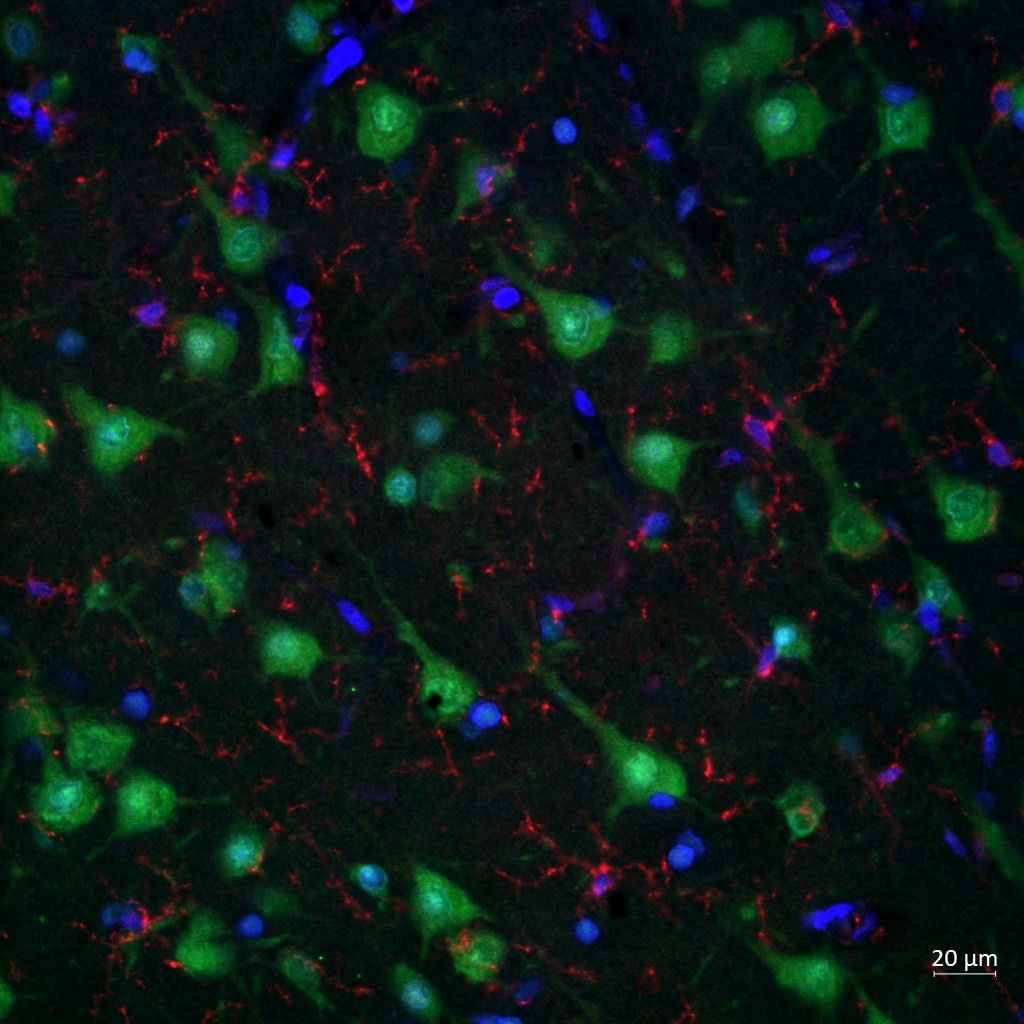 |
FH Ryan (Verified Customer) (06-15-2018) |
|

